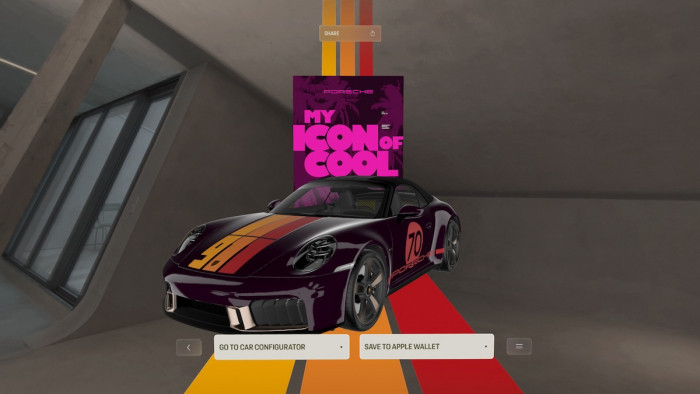Cartography has been through a lot of changes in the last few decades. Big changes. Redrawing the boundaries, if you will.
Plodding along with varying levels of accuracy for a few centuries, using a combination of massive rulers, squinting and coloured pencils, mappers had their world blown wide open with the arrival of satellites, GPS and the internet.
But as groups such as Google started building the biggest, most accurate maps in human history, some problems emerged: not every nation in the world is happy with having their back gardens plastered all over the web.
A favourite of conspiracy theorists and dank, dark forums of the internet - you'll often see stories crop up of areas Google didn't want you looking at, but have since been updated with new images. The following strange locations are still obscured by Google Earth - and we're not really sure why.

Kangtega summit, Nepal
Where is it: The Himalayas
As the snow-covered Alps wind their way through Nepal, they reach this 6,782-metre peak - known as the Snow Saddle.
While there are plenty of photos of the peak, accessible via Google Images, the mountain top blanks out when viewed on Google Earth. Why? It's thought to be an error with the imaging software rather than anything sinister - but who knows, it could be an evil lair for some super villain. Best guess: Elon Musk.

The Volker Airbase
Where is it: Southern Netherlands
One of several examples of satellite censorship requested by the Netherlands. They just don't like you looking at their airbases, okay? It's not that they've got nothing to hide - they'd just rather you didn't look.

Allied Joint Force Command Brunssum
Where is it: Southern Netherlands
It would appear that NATO aren't fans of being snooped on.
Established in 1953, you can get plenty of information about what goes on at the Allied centre in Brunssum - there's even a Wikipedia page about it.
Chances are, when Google informed NATO that they wanted to put pictures of their base on the internet, NATO probably thought "Ah crap, did we have anything super secret on the runway that day? Best censor it just to be sure."

Severnaya Zemlya
Where is it: A large chain of islands off the north coast of Russia
The Severnaya Zemlyas are something of a conspiracy theorist's wet dream.
An archipelago (island chain) situated off the north coast of the Mother Land, it wasn't formally recorded until 1910, before being more extensively mapped in 1931.
And yet, for some unbeknown reason, Google isn't allowed to put their satellite images of the island online. The islands have recently gained attention as a marker for the grim progress of climate change, with large areas of permanent ice giving way to open water between some of the island groups.
Or maybe it's not global warming causing the ice to melt. Maybe it's Russian rocket experiments!
Probably isn't though.

Roses valley
Where is it: Girona region, north-east Spain
This is a funny one.
Located in the comarca of the Alt Empordà in Costa Brava, the region is known for its tourism trade and fishing port. But for some reason, the winding road near the Hotel Roses (which isn't at all clandestine) is a mapping black spot.
Have you stayed near the region? Got any wonderful stories about mysterious flying objects and cheap wine? Get in touch.

Portlaoise Maximum Security Prison
Where is it: Portlaoise, County Laois, Ireland
"But you can clearly see the prison?"
Yes, you can - but this is a satellite image taken back in 2005, while the surrounding area is from a far more recent data set.
Given that the prison's inmates include convicted members of the Provisional Irish Republican Army, this isn't a prison the Irish authorities want you having a clear plan of: in addition to the old imagery on Google Earth, there's a no fly zone situated over the area.
In short, the internet isn't going to help you plot any extravagant prison escapes, so don't bother looking.

Taiwanese National Security Bureau Headquarters
Where is it: North Taiwan
Want to look at the National Security Bureau Headquarters of Taiwan, do you?
Well you can't, okay? Bugger off!
But really, all you'd see is some grey-green roofs and car parks. You can have a look at the front door here.

Faroe Islands
Where is it: Off the west coast of Norway
There's an odd joy in searching for your roof on Google Earth - don't pretend you haven't done it.
So spare a thought for the inhabitants of the Faroe Islands, who find much of their neighbourhood covered in obscured satellite imagery.
Why? The sensible answer is "disputed fishing territories", but we prefer one along the lines of "secret sea monsters from government experiments".
Take your pick.

US/Mexico Border
Where is it: Hudspeth County, Texas
Go home, Google, you're drunk.
At least, it appears some intoxicated camera work is at play if you zoom into the border region of Hudspeth County.
Google Earth has had to intentionally obscure the region for... we're not altogether sure. If you're Donald Trump, the answer is probably along the lines of "stopping dem der Mexikans from stealing our freedom".
Someone should build a wall or something.

HWU transmitter
Where is it: Central France
To get the full effect of this censorship, start a few miles south at maximum zoom. You're able to make out farm land and idyllic countryside views - but as you head north toward the site of the HWU transmitter, the details suddenly become blurred beyond recognition.
Why? Because the HWU transmitter is used by the French Navy to transmit signals to its fleet of submarines. So they'd rather you don't know the exact layout of their car park and office buildings, okay? Bon.










